This article was co-authored by Eric Shipe. Eric Shipe is a Kitchen and Bath Designer and the Owner of Bath + Kitchen based in Washington DC. Eric and his team specialize in cabinetry, design, and remodels. They serve homeowners, interior designers, architects, and contractors with a refined process, creative ideas, 4K photo-realistic renderings, and 360 Panoramic views. Bath + Kitchen was featured in Best of Houzz 2017-2020. Eric holds a BA in Economics and Business Administration from Ursinus College.
wikiHow marks an article as reader-approved once it receives enough positive feedback. In this case, 100% of readers who voted found the article helpful, earning it our reader-approved status.
This article has been viewed 197,959 times.
Bamboo is a hardy material used in the construction of both indoor and outdoor furniture. Although different species of bamboo come in different colors, sheen, and textures, in general, bamboo's naturally dry color is a yellow, cream color. You may want to learn how to stain bamboo a darker color or different color to change the look of your outdoor furniture or to make the look of a room more cohesive. Perhaps you are creating a project and want to give it a unique look. Whatever your motivations, you can accomplish this goal after you purchase a few items.
Steps
-
1Wash the bamboo with a non-abrasive cloth, soap, and water before getting ready to change the color of bamboo. Allow the bamboo to dry completely.
-
2Use fine-grained sandpaper to lightly sand and remove the bamboo's natural waxy layer. All bamboo has this layer, and it will prevent the bamboo fibers from accepting the stain. Pay particular attention to the rough areas of the bamboo that may be difficult to get to. If you leave any of the waxy layer, the bamboo will accept stain in some areas, but not in others. This will give the bamboo a mottled look.[1]
- Be aware that sanding the bamboo will change the character of the bamboo since it removes the bamboo's natural sheen and reduces the nodes.
- If the bamboo you desire to stain has been left out in the weather for several months, it may have turned a light gray color. Bamboo that has been weathered has lost its tough, waxy outer layer and will readily take a stain, varnish, or paint.
- Make sure that the bamboo is free of dust before you get started.
Advertisement -
3Protect your work area with newspapers and your hands with rubber gloves.
-
4Use circular motions with a sponge or rag to stain the bamboo. Pay attention to the node areas.
- If you find that the bamboo is not taking the stain, wipe off the extra stain with a rag and allow the area to dry. Try re-sanding the area and then re-stain.
-
5Allow the stain to dry the specific number of hours recommended by the manufacturer. Add several coats as needed to get the desired color.[2]
-
6Finish with a sealant that will bring back the shine and prevent the bamboo from drying out and becoming brittle.
Heat-Treating Bamboo as a Color-Changing Option
-
1Treat bamboo with heat to give it a darker look like fresh coffee.[3]
-
2Drill holes at various spots down the length of the bamboo.
-
3Toast the bamboo with a handheld torch. Gently move the torch back and forth down the length of the bamboo until the desired color is reached.[4]
- Work in 6-inch sections, and turn the bamboo as needed. Work all the way around before moving on.
- Finish with a wax paste to add shine to the bamboo and preserve it.
-
4Finished.
Community Q&A
-
QuestionHow do I make bamboo shinier without losing its natural wax?
 Community AnswerAny wood furniture polish will work well on bamboo that still has its natural waxy coat. Olive oil, coconut oil, or even WD-40 will bring out the shine.
Community AnswerAny wood furniture polish will work well on bamboo that still has its natural waxy coat. Olive oil, coconut oil, or even WD-40 will bring out the shine. -
QuestionCan I use teak oil to maintain or bring luster to a bamboo mat?
 Community AnswerI use teak oil all the time for my precious bamboo mats. It really makes the extra difference if used every 2-3 months.
Community AnswerI use teak oil all the time for my precious bamboo mats. It really makes the extra difference if used every 2-3 months. -
QuestionWill bamboo accept stain like wood after I remove the wax coating?
 Community AnswerAbsolutely. Sand and strain as you would any other wood that might have a light coat of old varnish on it. Remove the natural coating, and the stain can cover the exterior uniformly.
Community AnswerAbsolutely. Sand and strain as you would any other wood that might have a light coat of old varnish on it. Remove the natural coating, and the stain can cover the exterior uniformly.
Warnings
- Some bamboo experts indicate that heat-treating bamboo may weaken it and the process may not be suitable for high-trafficked bamboo such as rugs.⧼thumbs_response⧽
Things You'll Need
- Soap and water
- Non-abrasive cloth
- Sandpaper
- Newspapers
- Gloves
- Stain
- Sponge or rags
- Paint
- Varnish
- Sealant
- Drill
- Handheld propane torch
- Wax paste
References
- ↑ https://www.washingtonpost.com/lifestyle/home-garden/how-to-refinish-bamboo-floors/2012/03/06/gIQAIhh89R_story.html
- ↑ https://ourpastimes.com/how-to-make-bamboo-window-blinds-12125420.html
- ↑ https://www.youtube.com/watch?v=YCSwvonEE4I
- ↑ https://www.youtube.com/watch?v=AT-UIWYepR4
- ↑ http://www.greenhomebuilding.com/QandA/bamboo/preservation.htm
- http://www.youtube.com/watch?v=ZxWAraMW4qs
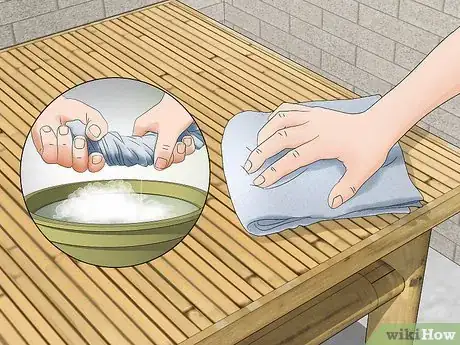
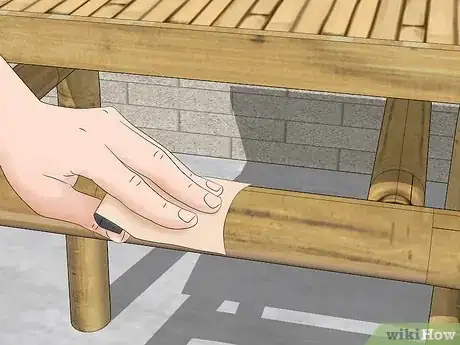
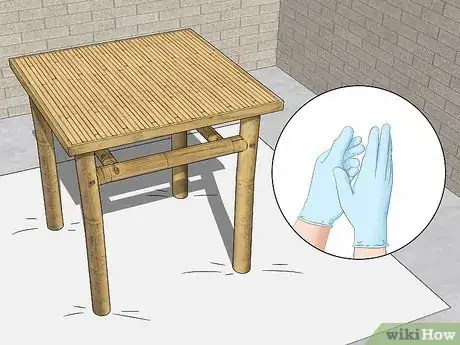
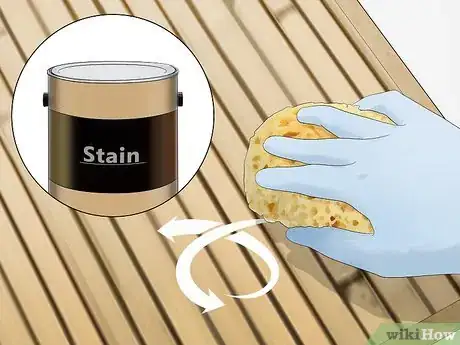
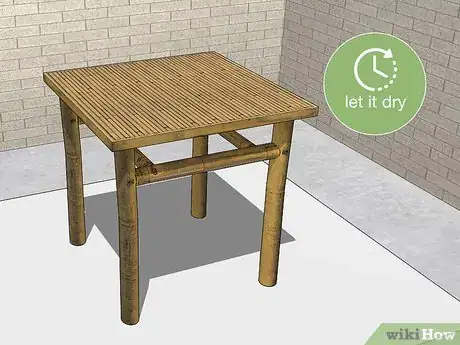
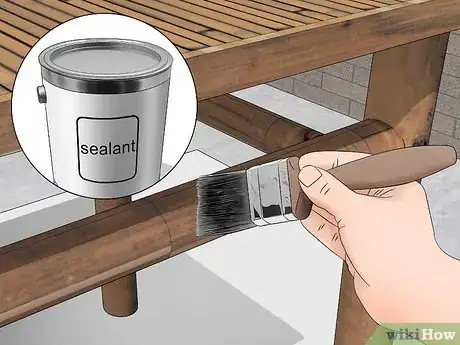
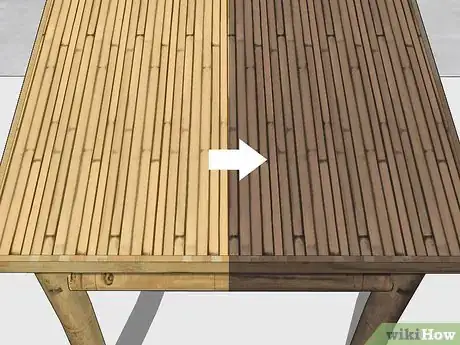


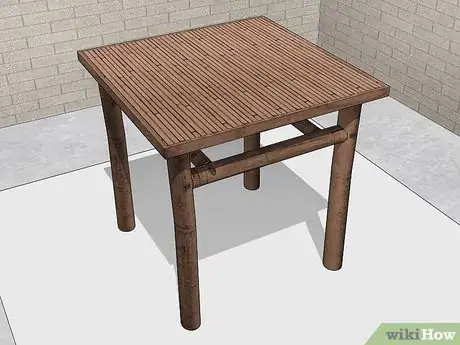
-Step-11.webp)

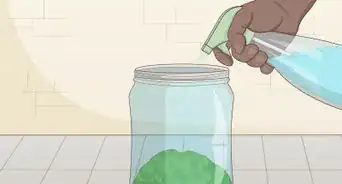














-Step-11.webp)




































